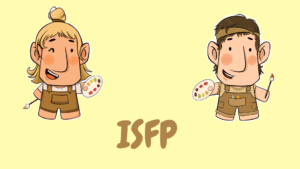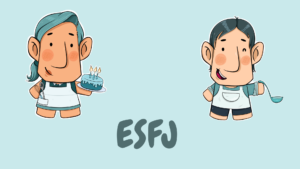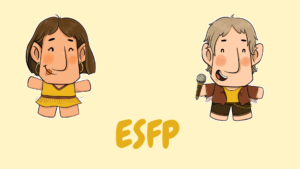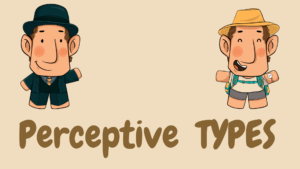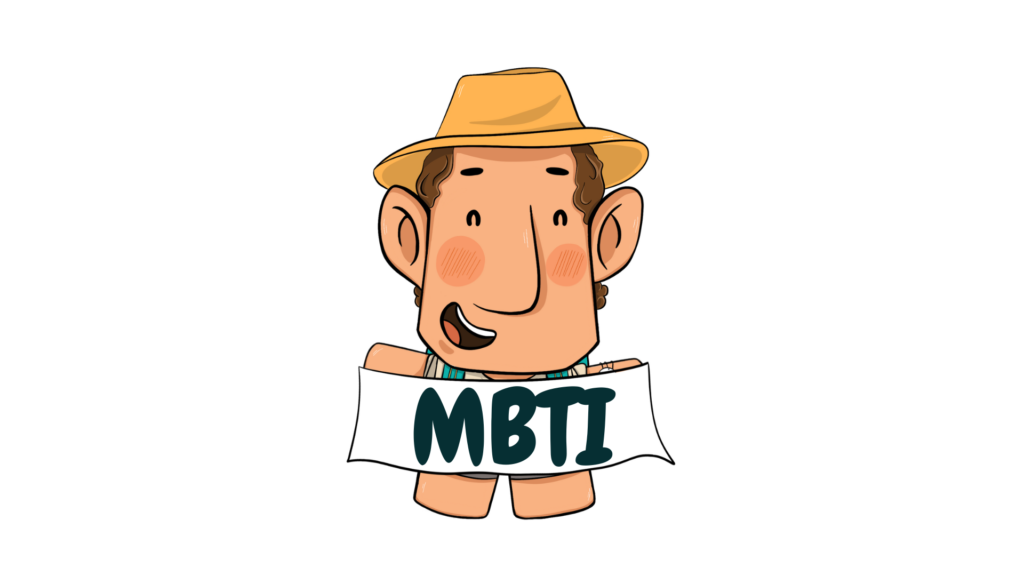
Do you ever lie awake at night pondering the mysteries of your own existence, wondering why you’re just so darn unique? Do you feel like a misunderstood genius, lost in a sea of mediocrity? Have you ever had a nightmare where you were suffocating under a mountain of paperwork? Do you find yourself making decisions that leave others scratching their heads in confusion, wondering if you’re operating on a different wavelength altogether?
If any of these scenarios sound familiar, fear not! The Myers-Briggs Type Indicator (MBTI) is here to rescue you from the depths of personality purgatory. By answering a few seemingly innocuous questions, you can unlock the secrets of your soul and discover why you’re just so delightfully quirky. Embrace your inner weirdness and let the MBTI guide you on a whimsical journey of self-discovery. Who knows, maybe you’ll finally understand why you’re the way you are, and maybe, just maybe, you’ll find your tribe of fellow misfits along the way. So buckle up, let’s dive into the world of personality typing!
Genesis Of MBTI
Catherine Cook Briggs and Isabel Briggs Myers, the dynamic duo of personality typing, were like the Wonder Women of the psychological world, swooping in to save us mere mortals from the clutches of confusion and mediocrity. Inspired by the legendary Carl Jung, who was basically the Dumbledore of personality theory, these two fierce females decided to take his complex ideas and turn them into a magical potion known as the Myers-Briggs Type Indicator (MBTI).
Imagine a world where your personality was not just a mishmash of random traits, but a carefully crafted masterpiece of sixteen unique types, each with its own special powers and quirks. Thanks to the MBTI, you could finally unlock the secrets of your soul and bask in the glory of your true self.
The MBTI quickly became the Beyoncé of personality tools, slaying all other contenders with its dazzling array of insights and revelations. People from all corners of the globe flocked to its mystical wisdom, using it to navigate the treacherous waters of relationships, work, and life in general.
From classrooms to boardrooms to battlegrounds, the MBTI was there, shining a beacon of light on the path to self-discovery and personal growth. It was like having a personal Yoda whispering in your ear, guiding you towards your true destiny.
So, embrace your inner superhero and let the MBTI be your trusty sidekick on this epic quest of self-exploration. Who knows, maybe you’ll uncover hidden talents, unearth secret desires, or just have a good laugh at your own quirks along the way. Remember, with great personality comes great responsibility… or something like that.
Four Areas of Personality in MBTI
The Myers-Briggs Type Indicator (MBTI) is based on four areas that categorize individuals into one of 16 personality types. These areas are:
Extraversion (E) or Introversion (I)
Sensing (S) or Intuition (N)
Thinking (T) or Feeling (F)
Judging (J) or Perceiving (P)
By combining these four areas, individuals can be categorized into one of 16 personality types. In the following, we will explain the above areas.

Extraversion (E) or Introversion (I)
This area indicates whether you get your energy from the external world or your internal world.
People who are Extraversion (E)
· Outgoing, sociable, and enthusiastic
· Like to interact with people and be involved in various activities
· Drawn to the stimuli and feedback of their surroundings
· Express their thoughts and feelings openly
People who are Introversion (I)
· Quiet, reflective, and reserved
· Prefer to spend time alone or with a few close friends
· More interested in their inner world of ideas and impressions
· Communicate their thoughts and feelings through writing or after careful consideration
Note that in the MBTI, people are not labeled as either extroverts or introverts, but as having a preference for one or the other.

Sensing (S) or Intuition (N)
This area indicates whether you pay more attention to the reality of the present or the potential of the future.
People who are Sensing (S)
· Realistic, observant, and practical
· Focus on the facts and details of the situation
· Use their senses to gather information
· Rely on their experience and common sense to make decisions
· Prefer to follow a clear and logical plan
People who are Intuition (N)
· Creative, visionary, and imaginative
· Look beyond the surface and see the big picture and the hidden meanings
· Use their intuition and imagination to generate ideas and possibilities
· Prefer to explore new and unconventional options
Note that people can use both sensing and intuition depending on the situation, but they usually have a preference for one or the other.

Thinking (T) or Feeling (F)
This area indicates whether you base your decisions more on logic or values.
People who are Thinking (T)
· Rational, analytical, and objective
· Use facts, evidence, and principles to make decisions and evaluate situations
· Good at applying logic and reason
· Tend to detach themselves from personal emotions when making decisions
People who are Feeling (F)
· Compassionate, empathetic, and subjective
· Use personal values, feelings, and human needs to make decisions and evaluate situations
· Good at understanding people and emotions
· Tend to consider the impact of decisions on others
Note that people can use both thinking and feeling depending on the situation, but they usually have a preference for one or the other.

Judging (J) or Perceiving (P)
This area indicates whether you prefer to have a planned and organized approach to life or a flexible and spontaneous one.
People who are Judging (J)
· Like to have a clear and orderly environment
· Make plans, follow routines, and meet deadlines
· Decisive, organized, and goal-oriented
· Value clarity, closure, and control
· Work before they relax
· More direct and assertive
· More resistant and anxious about change
People who are Perceiving (P)
· Like to have a varied and adaptable environment
· Keep their options open, adjust to new circumstances, and improvise as they go
· Curious, adaptable, and open-minded
· Value freedom, variety, and change
· Enjoy the moment and work well under pressure
· More diplomatic and tactful
· More accepting and excited about change
Note that people can use both Judging and Perceiving depending on the situation, but they usually have a preference for one or the other.
4 Personality Groups in the MBTI Test

Analysts
Analysts are the Brainiac of the personality world, armed with a magnifying glass of intuition and a thinking cap sharper than a ninja’s shuriken. They devour knowledge faster than a hungry T-Rex at a buffet and can crack mysteries with a wink and a dazzling deduction. With self-confidence soaring higher than a rocket launch and independence stronger than a lone wolf on a mission, these Analysts are like a league of extraordinary detectives ready to solve any case with a witty quip and a touch of flair.
Architects (INTJ)
Architects possess strategic minds so sharp they can cut through steel, enabling them to pursue their goals with unparalleled efficiency and decisiveness. Their egos stand as tall as Mount Everest, their stubbornness is as unyielding as diamond, and their sensitivity is as solid as rock-bottom.
Logicians (INTP)
Logicians with minds so sharp they can split atoms, Logicians are the mad scientists of the personality world, concocting innovative solutions while floating in their detached, impractical bubbles.
Commanders (ENTJ)
They have a confident and assertive personality, with a natural charisma and leadership. They excel at inspiring and motivating others to achieve their goals and potential. They are sociable, responsible, and ambitious. However, they may also be domineering, impatient, and intolerant of others.
Debaters (ENTP)
They have an adventurous and energetic spirit, with a sharp wit and intelligence. They love to debate, experiment, and challenge the status quo. They are friendly, spontaneous, and enthusiastic. However, they may also be restless, unfocused, and argumentative.

Diplomats
Diplomats share the personality traits of Intuition (N) and Feeling (F). which means they are imaginative, empathetic, and idealistic. They care about helping and connecting with others, and they often have deep insights into human nature. The four types of Diplomats are:
Advocates (INFJ)
Advocates with a heart bigger than the universe, Advocates are on a mission to save the world with their superhuman empathy and strategic minds. They’re like the Avengers, but with more feelings.
Mediators (INFP)
These artistic unicorns sprinkle compassion and creativity wherever they go, seeking harmony in a world of chaos. They’re the dreamers who believe in rainbows and unicorns, even on Mondays.
Protagonists (ENFJ)
Picture a superhero crossed with a life coach – that’s the Protagonist. They lead with a dazzling smile, inspiring others to greatness while juggling idealism and a cape.
Campaigners (ENFP)
Imagine a whirlwind of ideas and enthusiasm in human form – that’s the Campaigner. They’re the life of the party, bouncing from one adventure to the next with a sparkle in their eye.

Sentinels
Sentinels, the unsung heroes of the personality world, are like the Swiss army knives of human behavior – they’ve got a tool for every situation! Picture a Sentinel leading a team – it’s like watching a master chef in the kitchen, whipping up a perfect dish with precision and flair. They’re so organized that even Marie Kondo would be like, “Wow, you’re next level!” These guardians of practicality are like the superhero squad of reliability, always ready to swoop in and save the day. They’re the human equivalent of a safety net – always there to catch you when you fall. So, if you ever need someone to keep things running smoothly and maintain order, look no further than a Sentinel!
Logisticians (ISTJ)
These efficiency gurus have a master plan for everything, like organizing socks by color and size. They’re as decisive as a superhero but might struggle with perfectionism – cue the dramatic music.
Defenders (ISFJ)
Defenders with hearts bigger than the universe, Defenders protect and care for all like guardian angels. They’re patient as saints but can be as shy as a kitten at a dog show.
Executives (ESTJ)
Imagine a charismatic leader with the assertiveness of a lion leading a pride. Executives inspire with their confidence, but watch out for their impatience – it’s faster than lightning.
Consuls (ESFJ)
These social butterflies bring sunshine and rainbows wherever they go, spreading joy like confetti. They’re as generous as Oprah but watch out for their neediness – it’s stickier than glue.

Explorers
Explorers are the dynamic duo of spontaneity and adaptability, always ready to dive headfirst into the unknown with a twinkle in their eye and a spring in their step. They’re like a mix of Indiana Jones and Bear Grylls, fearlessly navigating life’s twists and turns with a dash of James Bond’s suave charm thrown in for good measure. These thrill-seekers are the ultimate DIY experts, MacGyvering their way out of any situation with nothing but a paperclip and a can-do attitude. They’re as curious as a cat in a room full of laser pointers and as resourceful as a squirrel stocking up for winter. In essence, Explorers are the rock stars of the personality world, always ready to steal the spotlight with their daring exploits and insatiable thirst for adventure.
Virtuosos (ISTP)
These mechanical maestros are like the love child of MacGyver and Tony Stark, effortlessly fixing anything that’s broken and zipping through life with a cool, calculated swagger. They’re the James Bond of the workshop.
Adventurers (ISFP)
With a soul as sensitive as a poet’s and a style as unique as a rare gem, these artistic individuals dance through life like a delicate breeze, painting the world with their emotions and fashion sense. They’re the Picasso of personality types.
Entrepreneurs (ESTP)
These charismatic go-getters are the life of the party and the master of the deal, juggling opportunities like a circus performer and charming their way to success. They’re the smooth-talking superheroes of the business world.
Entertainers (ESFP)
This lively bunch is like a walking party, spreading joy and laughter wherever they go with the energy of a thousand suns and the generosity of Oprah. They’re the rockstars of social gatherings, stealing the show with their infectious charisma.
Why is the MBTI Different from Other Instruments?
The Myers-Briggs Type Indicator (MBTI) is a widely used personality assessment that categorizes individuals into one of 16 types based on their preferences for four dimensions: extraversion/introversion, sensing/intuition, thinking/feeling, and judging/perceiving. However, the MBTI differs from other psychological tests in several important ways.
Firstly, the MBTI is not a conventional “test” as there are no right or wrong answers and no type is superior to another. The purpose of this indicator is to provide a tool for people to understand themselves and others better, rather than to evaluate mental health or provide any type of diagnosis.
Secondly, unlike many other psychological assessments, the MBTI does not compare your results to any benchmarks or norms. Instead, it aims to provide more information about your unique personality and how it influences your behavior, choices, and relationships. The MBTI does not measure your abilities or skills but rather your preferences and tendencies.
Therefore, your type is not fixed or static but rather dynamic and adaptable. It is important to note that the MBTI should not be used to label or stereotype individuals, but rather as a tool for personal growth and understanding.
Reliability of MBTI
The Myers-Briggs Type Indicator (MBTI) is a widely used personality assessment tool, and its reliability has been extensively studied. Reliability refers to the consistency and stability of a measuring instrument. Researchers have used various methods to assess the reliability of the MBTI, including split-half, Cronbach’s alpha, and test-retest methods.
Studies have generally found that the MBTI has good internal consistency and test-retest reliability, meaning that it produces consistent results over time. However, the reliability of the MBTI scales may vary by age, gender, and developmental level. For example, the MBTI has been found to be more reliable for older adults than younger adults and for women than men.
In addition to reliability, researchers have also investigated the validity of the MBTI. Validity refers to the extent to which a measuring instrument measures what it claims to measure. Studies have found that the MBTI is positively correlated with other measures of personality and that its internal structure is consistent with Jung’s theory of psychological types.
Overall, while the MBTI has its limitations and criticisms, research has provided evidence for its reliability and validity as a tool for understanding personality.
Validity of MBTI
Validity means to what extent the method or tool used can measure the desired characteristic. In terms of validity, researchers have compared MBTI scores to other personality measures and behaviors. McCaulley and Kainz (1996) found that the MBTI was positively correlated with other measures of personality, such as the NEO Personality Inventory. Furthermore, research has shown that MBTI scores are consistent with Jung’s theory of psychological types. Pittenger and Hammer (1996) found that the internal structure of types was consistent with Jung’s theory.
Moreover, researchers have reported that the MBTI has strong construct validity. They found that MBTI scores were significantly correlated with self-esteem and MBTI-related behaviors. Additionally, factor analysis supported the structure of the MBTI and showed that the items were highly correlated with their intended scales.
Overall, while the MBTI has its limitations and criticisms, research has provided evidence for its reliability and validity as a tool for understanding personality.
MBTI Has Useful Content for Various Personal Aspects
MBTI can help you better understand yourself and others. It can provide useful content for various aspects of personal and professional development, such as:
Understand yourself and others
MBTI is a powerful tool for gaining insight into your own preferences and behaviors, as well as understanding and appreciating the differences in others.
Career choice
It can guide you towards roles and professions that align with your personality type and strengths, promoting fulfillment and success in your chosen field.
Improve communication and cooperation
By recognizing and respecting different personality types, you can enhance your ability to collaborate effectively with diverse individuals, both personally and professionally.
Strengthen team dynamics and leadership
Utilize MBTI to foster a more cohesive and productive team environment, while also honing your leadership skills based on an understanding of different team members’ preferences and working styles.
Stress management and adaptability
Understanding personality variances can aid in managing stress, adapting to change, and navigating challenging circumstances with greater resilience.
Enhance learning and academic performance
Tailoring study techniques and academic pursuits to your personality type can optimize learning outcomes and academic success.
Embrace diversity
MBTI encourages appreciation and acceptance of the diverse range of personalities, fostering a more inclusive and harmonious social and professional environment.
Foster personal growth and self-awareness
By leveraging MBTI insights, you can embark on a journey of self-discovery, personal development, and a deepened understanding of your own motivations and behaviors.

